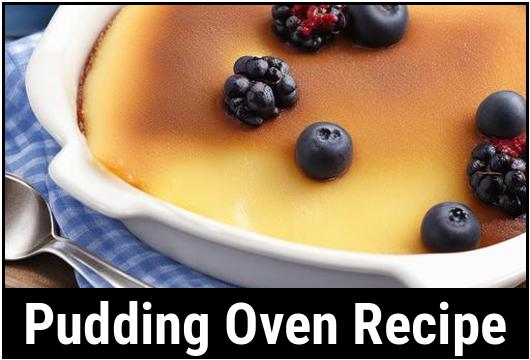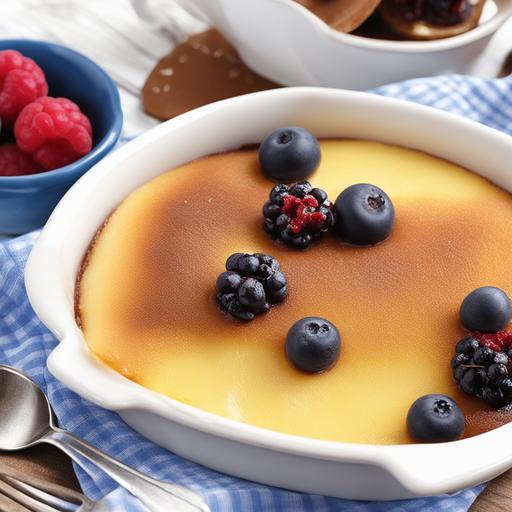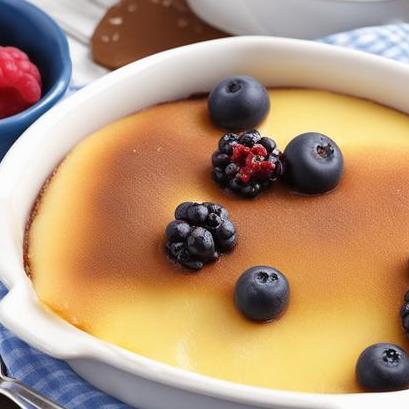
The Ultimate Guide To Pudding Oven Recipe: Tips, Variations, Recipe And More
Pudding is a classic British dessert that has been enjoyed for centuries. And what better way to make this dessert than with a pudding oven? With a pudding oven, you can make the perfect pudding every time, with a crisp crust and a soft, creamy center. In this comprehensive guide, we will cover everything you need to know about pudding oven recipe.
Food Science: Understanding Pudding
Pudding is a dessert made from a base of milk, sugar, and a thickening agent. The most common thickening agents used in pudding are cornstarch, tapioca, and gelatin. When the pudding mixture is heated, the thickening agent absorbs the liquid and thickens the mixture. As the mixture continues to cook, it reaches a boiling point, causing the starches to gelatinize and thicken the pudding even further.
Culinary Details: The Importance of Pudding Oven
While you can make pudding on the stovetop, using a pudding oven ensures that your pudding comes out perfectly every time. A pudding oven is designed to bake delicate desserts like pudding at a low temperature, which allows the dessert to cook evenly and develop a crisp crust.
Selection: Choosing the Right Pudding Oven

When it comes to selecting a pudding oven, there are several factors to consider. First, determine what size oven you need based on how many servings you wish to make. You’ll also want to consider the temperature range of the oven, any additional features, and the overall quality of the appliance.
Cleaning: Caring for Your Pudding Oven
After you’ve enjoyed your delicious pudding, it’s important to clean your oven properly. Follow the manufacturer’s instructions for cleaning and maintenance, and be sure to remove any crumbs, spills, or drippings after each use.
Preparation: Making Pudding in a Pudding Oven
Now that you have your pudding oven and have selected your recipe, it’s time to prepare the pudding. Follow these steps for foolproof pudding every time:
-
Grease your pudding mold or ramekins with butter or cooking spray.
-
In a medium saucepan, combine your thickener, sugar, and liquid (usually milk or cream) over medium heat.
-
Bring the mixture to a boil, stirring constantly. Reduce the heat to low and simmer until the mixture thickens.
-
Remove the saucepan from the heat and add in any additional flavors (such as vanilla extract) if desired.
-
Pour the pudding mixture into your prepared molds or ramekins.
-
Cover each mold with a piece of foil, then place them in the pudding oven.
-
Bake your pudding for the time specified in your recipe, making sure to check for doneness midway through.
Tips: Perfecting Your Pudding Recipe
To ensure your pudding comes out perfectly every time, follow these tips:
-
Use top-quality ingredients, especially when it comes to milk and cream.
-
Use a high-quality, non-stick pudding mold or ramekins to prevent sticking.
-
Make sure your pudding mixture is completely smooth before pouring it into your molds.
-
Use a kitchen thermometer to check the temperature of the pudding before it’s done to ensure it’s cooked evenly.
-
Allow the pudding to rest for a few minutes after removing it from the oven to allow it to set.
Variations: Adding Flair to Your Pudding

While classic vanilla pudding is always delicious, there are many variations you can try to add some pizzazz to your dessert. Here are a few ideas:
-
Chocolate Pudding: add cocoa powder to your pudding mixture for a chocolatey twist.
-
Butterscotch Pudding: substitute brown sugar for white sugar for a rich, caramel-y flavor.
-
Fruit Pudding: Add fruit puree (such as banana or strawberry) to your pudding mixture before baking for a fruity kick.
-
Toppings: top your pudding with whipped cream, fresh fruit, or crumbled cookies for a fun garnish.
Doneness Checks: Knowing When Your Pudding Is Perfect
To check if your pudding is done, insert a toothpick or cake tester into the center of the pudding. If it comes out clean, the pudding is ready. You can also use a thermometer to check the temperature of the pudding – it should reach 160°F.
Overcook and Undercook: How to Save Your Pudding
Overcooked pudding will become dry and crumbly, while undercooked pudding will be runny and unset. If you overcook your pudding, try adding a bit of milk or cream to the mixture to help moisten it. If it’s undercooked, simply return it to the pudding oven for a few more minutes until it’s set.
The Perfect Recipe: Vanilla Pudding
Now that you know all about pudding oven recipe, it’s time to try making your own. Here’s a classic recipe for vanilla pudding:
-
2 cups whole milk
-
1/3 cup cornstarch
-
1/2 cup sugar
-
1/4 tsp salt
-
1 tsp vanilla extract
In a saucepan, whisk together the milk, cornstarch, sugar, and salt. Cook the mixture over medium heat, stirring constantly, until it starts to thicken. Once it’s thickened, remove it from the heat and stir in the vanilla extract. Pour the pudding into greased ramekins or molds, cover with foil, and bake in the pudding oven for 30-40 minutes at 325°F. Once the pudding is fully set and cooked to the desired doneness, remove it from the oven and allow it to cool. Serve with whipped cream and fresh fruit for a delicious treat.
Conclusion
Pudding is a classic dessert that can be made even more delicious with the use of a pudding oven. Whether you’re a seasoned cook or a beginner, using a pudding oven ensures that your pudding comes out perfectly every time. With these tips and variations, you’ll be able to explore all the possibilities of this tasty dessert – so get baking!
Sources
FAQS On Pudding Oven Recipe
What Is A Pudding Oven Recipe?
A pudding oven recipe refers to a specific cooking method used to prepare various types of puddings. This technique involves baking the pudding in an oven at a specific temperature for a certain duration until it reaches a desired consistency and texture.
What Type Of Puddings Can Be Made Using A Pudding Oven Recipe?
A wide range of puddings can be prepared using a pudding oven recipe. Some popular options include bread pudding, rice pudding, custard pudding, chocolate pudding, and fruit pudding. Each type of pudding may require slightly different ingredients and cooking instructions.
What Equipment Is Needed To Make A Pudding In The Oven?
To make a pudding using an oven recipe, you will need a few basic kitchen tools. These include an oven-safe baking dish or mold, a mixing bowl, a whisk or spatula for stirring the ingredients, an oven thermometer to ensure accurate temperature control, and oven mitts or gloves to handle hot dishes.
Are There Any Special Techniques To Follow When Making A Pudding In The Oven?
While making a pudding in the oven, there are a few key techniques to keep in mind. It is vital to preheat the oven as per the recipe’s instructions to ensure even cooking. Additionally, it is crucial to place the baking dish or mold in a water bath or bain-marie to maintain a consistent temperature and prevent the pudding from overcooking or forming a dry crust.
How Long Does It Usually Take To Bake A Pudding In The Oven?
The baking time for a pudding in the oven can vary depending on the recipe and the specific type of pudding being prepared. On average, most puddings take between 30 minutes to an hour to bake. It is essential to monitor the pudding’s progress by inserting a toothpick or knife into the center to check for doneness. The cooking time can be adjusted based on the desired texture, ensuring a soft, creamy, or firmer pudding, depending on personal preference.



